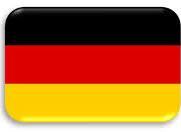Chronicle
Translation of excerpts from the chronicle of the village of Burgholz, written in 1983 by the resident Hermann Weber.
Unfortunately, there are no historical records of the origins of what was once called Borgholcz. No documents of any kind, written before the introduction of Christianity, exist. Scholars have characterized the situation with the phrase “Hassia non scribet!”, i.e. “Hesse does not write”.
It can be assumed that around the 8th century AD, in the area now called Keller, a castle was built on two steep slopes of a strip of land which pointed north along the Wohra valley. Traces of the fortified walls of the shield-shaped castle are still clearly visible today (1983). The fortifications were 215 metres long and up to 102 metres wide. Although the name “Hunburg” is no longer in use, we can surmise that it can be traced back to the “Hundsburg” in the Hundsbach – an aristocratic manor which, like Burgholz, was a fief of the Riedesel of Fulda Abbey. The manor in the Hundsbach (Henebuches Manor), situated only 1 km north-east of the Hunburg, was abandoned at an early date.
According to Otto Uenze, director of the department of floor antiquities (Amt für Bodenaltertümer) in Marburg, the Hunburg was probably an 8th century Carolingian structure.
Historically, the Hunburg was a Frankish defensive construction against the Saxons. Beyond Burgholz, the steep slopes (Burgholzer Wand) down to the Wohra valley, peter out. The valley’s middle section then broadens out into pastureland, only to converge again near the village of Wohra. The border between the Lahngau and the Hessengau ran perpendicular to the valley, so that these neighbouring areas were easily observed from the heights of Burgholz. The Hunburg, made of wood, was a good observation point in the Wohra valley. Strategically, this was why fortifications were built to defend the Lahnau area (in which Boniface founded the Amöneburg monastery in 721 AD). On its south side, where enemies could best force their way in, the Hunburg was separated from the hill’s crest by a V-shaped ditch (6 metres long and 2.5 metres deep) containing a row of palisades. It was a typically Carolingian construction. (Charlemagne ruled from 768 to 814 AD.)
The Hunburg had a gateway on its south-west side. Two symmetrical mounds were still recognizable in 1983. Even now, one can recognize a terraced track leading from there to the village centre. The Hunburg was probably accessed from what is now the Lindenplatz, and then over Konrad Michel’s (“Eckemichel’s”) property. The Torgasse, with two 12 metre-long sides, probably had ends which could be closed. On the west side of the main gates, inside the castle, the so-called cellar, an oval depression – 20 metres long and 15 meters broad – is situated in front of what was once the courtyard. A stone house, the castle’s main building, stood here. Surface unevenness in the whole area shows that other buildings also existed. These were possibly stores to take up the levies on local settlers, stables and accommodation for those in service.
After the demise of Charlemagne’s kingdom, the Hunburg became a property of the Fulda monastery. By the 11th century, it will have lost the character of a frontier station. Later, a curtain wall served as a quarry for the inhabitants of Rauschenberg and Burgholz. Until 1401, the abbots of the Fulda monastery owned the Hunburg, and were the feudal and judicial lords of the village. Their administrators governed the villagers’ rights, responsibilities and income, as well as guaranteeing their military protection (in which the villagers had to participate). After that, the Hessian Landgrave purchased Burgholz, and the Hunburg was occupied by the Riedesel knights.
The settlement of Borgholcz was founded in the wooded area directly next to the Humburg, between the 11th and 14th centuries. The first record goes back to 1317. The population increase at the time led to the foundation of more settlements. Except for a few houses, the village of Burgholz burnt down in 1775. Its reconstruction caused many families large debts. In the neighbourhood, and until the beginning of the 20th century, there was no more impoverished location than Burgholz. After the First World War however, the overall picture changed radically. It remained small, but became a clean and attractive village which, in the 1920s, was a top location in the Marburg area. In 1852 Burgholz had 292 inhabitants but, largely due to famines in 1846-1847 and emigration to America, there were only 217 in 1905.
- 1928 = about 250
- 1949 = 422 (including 25 evacuees and 182 refugees)
- 1950 = 428
- 1958 = 309
- 1976 = 322
After the Second World War, the influx of refugees swelled the number of inhabitants to 426 by 1950. After that, the population fell again, as many refugees left Burgholz – mainly for Stadtallendorf where they found room in newly established housing estates and work in modern industries.
Church life
In 1527, Landgrave Philipp the Magnanimous and his subjects adopted the Lutheran faith. To this day, Burgholz is largely Protestant.
The present-day church, built in 1831-1832, is a subsidiary of the church in Halsdorf.
School life
In 1830, the village school was autonomous. In 1898-1899, a new school was built which housed a primary class and the teacher’s family. In the summer, pupils were expected to help their parents with work in the fields.
